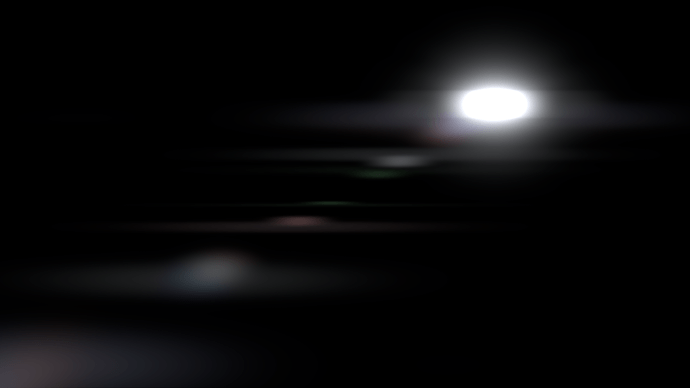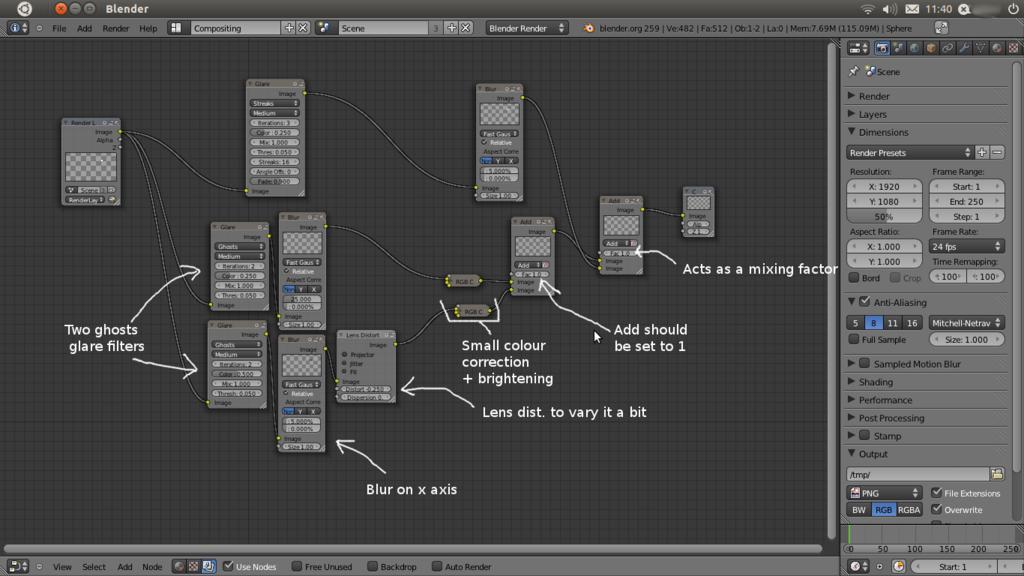Does anyone know how to create an anamorphic-style lens flare? I’ve been using the glare node which partially creates the effect but not completely. Any help would be appreciated.
That’s cool check out mike pans in that thread as well.
The most simple solution that I have seen is a Composite effect that uses the iterations of glare/ghosts zoomed up and layered over itself. But you would need streaks for anamorphic goodness. The Modeled approach would be cool indeed.
Aargh!
Pardon me.
As a somewhat-professional photographer, I cannot deny that I wince every time that I see references to “how do I do lens flare?” …
… because …
… if there is any one thing that a pro shooter would try at all costs to stamp out of his or her photographs, that “any one thing” would probably be: lens flare.
To me, “lens flare” ranks right up there alongside “cicadas.wav” (appearing as a sound effect at the moment when the hero is lost in the desert and the vultures are starting to look interested), or perhaps the Wilhelm scream, as something that qualifies 100% as “visual schtick.”
In other words: real shooters strive not to do it, but movies do it all the time. (Why? Dunno.)
It used to be that, when an editor was “quickly flipping through” a stack of negatives on the light-table, any lens-flare immediately caused the neg to be tossed onto the floor. (Literally.) It was the kiss-of-death mistake, never to be repeated if you wanted your work to “see paper” in that magazine.
Yes I shade my lens for flare when taking photos (stills) or when doing effects shots (keying or matte-ing) but I don’t mind a bit of verisimilitude when shooting movies. I like a bit of gritty ethereal behaviour from light as it moves and flares in slightly erratic ways adding a dynamic element to the action.
In photos it just gets in the way, unless you want that colour for stylistic purposes.
Thanks for the replies. I know some people don’t like the effect but I’ve found that it can help to make renderings appear more realistic because flares are associated with cameras. Also they were used a lot in the last Star Trek movie which I love. And I’ve been trying to create the same visual style in some of my renderings of the ships from the movie.
Tried to recreate lens artifacts in cycles, but failed. But proved I could burn an ant with a cycles magnifying glass.
I had problems getting the ant to hold still.
Thanks. That worked quite well. I’ll post a rendering when I get a chance.
Actually, I would like to see you re-post this idea in a “how to” thread that you might title, Faking Lens-Flare.
- It is computationally cheap, and it looks believable “enough.”
- You can add it to a shot after the fact.
- You can tweak the effect until it looks just right.
Three thumbs up. :yes:
I think that space-movies have adopted lens flare (and uncommonly-bright highlights) because they think that it gives a sense of depth to a shot … or maybe just because it fills-up some “space” space. Therefore, if you are doing a space-movie shot, then sure, it makes sense to “when in Rome, do what George Lucas do.”
But otherwise, I’m still dead-set against flare because I have seen my own shots “hit that floor” because of a “teeny-weeny bit” of flare in the frame. (The editor assured me that it was not merely a matter of personal dislike, but a matter of the vagaries of CMYK printing. He started to explain until he saw my eyes glaze over.)
Certainly one advantage of the approach described here is that you can give the plausible suggestion of “flare” without actually encountering the publication-killing qualities of the real effect.
Glad you like it 

